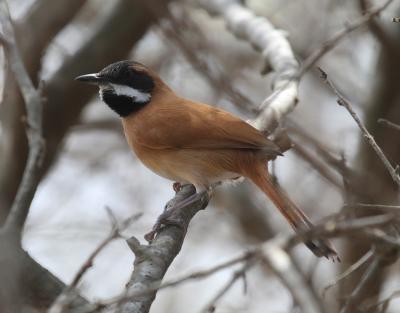Chile: Tierra del Fuego to the Atacama Desert
-
Nov 7-23, 2024
Fabrice Schmitt and J Quillén Vidoz
-
Nov 2025
Raymond VanBuskirk and J Quillén Vidoz
2025 Tour Price to be Determined
2025 Tour Price to be Determined
A fascinating collection of birds coupled with some of the most spectacular scenery on earth makes birding in Chile a superb experience. This narrow strip of territory, 150 miles wide by 2,500 miles long, is a land of immense variety and beauty: from the grandeur of wave-dashed Pacific beaches to the solitude of high Andean lakes, and from the rolling plains of Tierra del Fuego to the utterly barren Atacama, the most perfect of deserts. Traveling the length (and breadth) of the country impresses upon one the remarkable similarities of climate, vegetation and topography, not to mention convergent evolution, between the Northern and Southern Hemispheres. Our tour of Chile is the equivalent of going from southeastern Alaska to southwestern Mexico! Birders today can thank Goodall, Johnson, Millie, and Philippi, who brought to the fore our knowledge of Chile’s avifauna through their extensive field work from the 1920s through the 1950s. The triumphs and failures of this pioneering work are conveyed in Johnson’s classic Birds of Chile, now sadly out of print. Their work showed that Chile has a bird list combining high quality and high visibility. The avifauna ranges from penguins, rheas, flamingoes and a superb selection of southern waterfowl and shorebirds to 30 species of ovenbirds (furnariids), eight tapaculos (three of them endemic), nine sierra-finches, and five siskins.
Our tour coincides with the austral spring, when bird activity is at its height, and is designed to take in all the major regions of this diverse land. Chile is throughout a safe and friendly country in which to travel, and has an excellent infrastructure for tourism.
A fascinating collection of birds coupled with some of the most spectacular scenery on earth makes birding in Chile a superb experience. This narrow strip of territory, 150 miles wide by 2,500 miles long, is a land of immense variety and beauty: from the grandeur of wave-dashed Pacific beaches to the solitude of high Andean lakes, and from the rolling plains of Tierra del Fuego to the utterly barren Atacama, the most perfect of deserts. Traveling the length (and breadth) of the country impresses upon one the remarkable similarities of climate, vegetation and topography, not to mention convergent evolution, between the Northern and Southern Hemispheres. Our tour of Chile is the equivalent of going from southeastern Alaska to southwestern Mexico! Birders today can thank Goodall, Johnson, Millie, and Philippi, who brought to the fore our knowledge of Chile’s avifauna through their extensive field work from the 1920s through the 1950s. The triumphs and failures of this pioneering work are conveyed in Johnson’s classic Birds of Chile, now sadly out of print. Their work showed that Chile has a bird list combining high quality and high visibility. The avifauna ranges from penguins, rheas, flamingoes and a superb selection of southern waterfowl and shorebirds to 30 species of ovenbirds (furnariids), eight tapaculos (three of them endemic), nine sierra-finches, and five siskins.
Our tour coincides with the austral spring, when bird activity is at its height, and is designed to take in all the major regions of this diverse land. Chile is throughout a safe and friendly country in which to travel, and has an excellent infrastructure for tourism.
Day 1: The tour begins at 12 noon in the lobby of our Santiago hotel. If flight arrival times allow, we’ll visit some nearby areas for an introduction to the birdlife of Chile’s Central Valley. Night in Santiago.
Chile was excellent and Steve is amazingly talented when it comes to finding and pointing out birds. He applied just enough alpha-dog to keep everyone in line without causing hard feelings, and was attentive to special needs that arose. On top of that, he keep up with extremely challenging and quickly-changing situations, anticipating the effects of the daily political unrest. His fluent Spanish and talent for working around obstacles in Latin American countries came in handy more than once. If he doesn’t enjoy facing challenges, he puts on a good act. At any rate, he took good care of us while finding the birds with nearly surgical precision. It was an awesome experience.
Jo Bills, Nov 2019
Day 2: This morning we’ll take the spectacular flight south to Punta Arenas on the northern shores of the Straits of Magellan. The bleak, gray stone buildings of Punta Arenas belie its people, mainly of eastern European descent, who are as warm and hospitable as one finds anywhere, while the rocky coast and rolling grasslands, with their enclaves of European sheep farmers, suggest northern Scotland. Ancient forests of twisted, stunted Nothofagus (southern beech) trees reflect the harshness of the southern temperate climate and contribute to the distinctive flavor of Patagonia, a world apart from the rest of South America. Birding in the vicinity after our arrival will produce a taste of the wealth of waterbirds for which the area is famous, including Imperial and Rock Shags, Upland Goose, Flying Steamer-Duck, Two-banded Plover, Chilean Skua, and Dolphin Gull plus the tiny and endearing Austral Negrito and the ubiquitous Rufous-collared Sparrow. Night in Punta Arenas.
Days 3-4: We’ll have two full days to explore the vast, windswept Magellanic region. One day we’ll take the short ferry ride across to Tierra del Fuego, where we should see Magellanic Diving-Petrel, Magellanic Penguin, Southern Giant-Petrel, and perhaps the beautiful Commerson’s Dolphin. One of our main goals on Tierra del Fuego will be to find the enigmatic and dove-like Magellanic Plover (placed in its own family, Pluvianellidae), nesting at this season amid migrant Baird’s and White-rumped Sandpipers. Other breeding shorebirds include the handsome Tawny-throated and Rufous-chested Dotterels. The numerous lakes of southernmost Chile are often alive with waterfowl such as Black-necked Swan, Ashy-headed and Ruddy-headed Geese, Crested Duck, and Yellow-billed Teal. Darwin’s (Lesser) Rheas dot the landscape in many areas, and we’ll plan to visit a small but growing colony of King Penguins. Landbirds include Short-billed and Common Miners, Patagonian Yellow-Finch, and with luck the little-known Austral Canastero and the striking Chocolate-vented Tyrant. Nights in Cerro Sombrero and Punta Arenas.
Days 5-6: This morning we’ll fly north from Punta Arenas to Puerto Montt, gateway to Chile’s picturesque Lake District. After check-in and lunch at our hotel in Puerto Montt, we will visit a nearby sanctuary protecting a patch of spectacular old-growth temperate rainforest. The huge trees are in stark contrast to the open wilderness of Patagonia, and the forests ring with the calls of two striking tapaculos, the Chucao Tapaculo and the Black-throated Huet-huet. The following day we’ll spend most of our time birding in the forest of Alerce Andino National Park, seeking in particular the impressive Magellanic Woodpecker and the skulking Ochre-flanked and Magellanic Tapaculos. The supporting cast here includes Austral Parakeet, Des Murs’s Wiretail, White-throated Treerunner, and Black-chinned Siskin. Nights in Puerto Montt.
Day 7: For our last morning around Puerto Montt, we’ll visit beautiful Chiloé Island. During the ferry ride across Chacao Channel to the island, we’ll have a chance for Magellanic Penguin and Red-legged Cormorant. Pods of Dusky Dolphins will sometimes ride the bow of the ferry. Once on Chiloé, we will visit Caullin Bay, an important wintering area for Hudsonian Godwit. In addition to these boreal migrants, we can also find a great variety of local species including Flightless Steamer-Duck, Black-necked Swan, Yellow-billed Pintail and the rare Snowy-crowned Tern. In the nearby scrub we may also spot a flock of the endemic Slender-billed Parakeet. After a morning on the Island, we’ll cross the channel back to the continent and fly north to Santiago. Night in Santiago.
Day 8: Central Chile, at the same latitude as southern and central California, has a Mediterranean climate and chaparral-like vegetation known as matorral. Extensive vineyards and the introduced California Quail, California poppy, and towering eucalyptus trees cultivate the illusion that one is in the Northern Hemisphere. To dispel any doubts we’ll spend the day birding our way to the coast at Valparaiso, passing through a variety of habitats where birds include Spot-flanked Gallinule, Wren-like Rushbird, and Rufous-tailed Plantcutter. We’ll make a special effort to see the handsome Many-colored Rush-Tyrant and the endemic White-throated Tapaculo. Along the coast we should see Peruvian Booby, Peruvian Pelican, and the beautiful Inca Tern. Night in Viña del Mar.
Day 9: Today we’ll make an early departure by boat a short distance offshore into the famous Humboldt Current which, by upwelling like its northern counterpart the California Current, provides a nutrient-rich base that supports a vast seabird population. Up to seven species of albatross are possible including Salvin’s, Buller’s, and Northern Royal, while Pintado (Cape), De Filippi’s (Masatierra) and Westland Petrels, Peruvian Diving-Petrel, and others are regularly seen. To bring us back to earth, we’ll spend the afternoon birding along the coast near our hotel. Night in Viña del Mar.
Day 10: We’ll make a morning birding trip north along the coast, including a visit to view a colony of Humboldt Penguins on an inshore islet. Species we’ll be looking for in the matorral-covered valleys leading down to the coast along our drive include Giant Hummingbird, Great Shrike-Tyrant, and the endemic Dusky-tailed Canastero and Dusky Tapaculo before our afternoon drive back to Santiago. Night in Santiago.
Days 11-12: The magnificent High Andes, their snow-capped peaks dominating the eastern horizon, are only a short drive from Santiago and will be our venue for the next two days. We’ll visit two sites with slightly different avifaunas, both in spectacular rugged settings. The birdlife of this region includes the flashy White-sided Hillstar, Gray-breasted Seedsnipe, numerous ground-tyrants, sierra-finches, and ovenbirds (including the endemic Crag Chilia), the comical Moustached Turca (a roadside tapaculo!), huge Andean Condors, and with luck the ultimate shorebird – Diademed Sandpiper-Plover. Nights in Santiago.
Day 13: A morning flight will take us north, leaving the cultivated Central Valley and heading over the bleak expanses of the Atacama Desert to the coastal town of Arica in the extreme north of Chile. Most of the day will be spent on the leisurely drive from Arica through the oasis-like Lluta Valley up to Putre, a small town nestled in a relatively lush valley at about 11,500 feet. As we climb, birds range from Croaking Ground-Dove and Peruvian Meadowlark in the lowland oases, through Greenish Yellow-Finch and Straight-billed Earthcreeper in the arid, scrubby foothills, to Andean Hillstar and Band-tailed Seedeater, both nesting near our hotel. Night in Putre.
Day 14: We’ll spend the whole day in and around Putre, taking our time with the almost completely new avifauna and also acclimating to the new elevation. We’ll see that the characteristic European face of central and southern Chile is gone. The terraced alfalfa fields and herds of llamas and alpacas, tended by Indians clad in brightly-colored wool garments, reflect the close cultural ties between northern Chile and the high Andes of Peru and Bolivia. Birds we can expect to see around Putre include Bare-faced Ground-Dove, White-throated Earthcreeper, Yellow-billed Tit-Tyrant, White-browed Chat-Tyrant, Black-throated Flowerpiercer, and Blue-and-yellow Tanager, and there’s a chance for Ornate Tinamou and Golden-billed Saltator. Night in Putre.
Day 15: Today will arguably be the highlight of the tour. We’ll spend most of the day visiting Lauca, often acknowledged as the most impressive national park in the Americas. There are no adequate descriptions for the breathtaking (literally!) scenery of the puna plains and bogs below snow-capped volcanoes. The park includes Lake Chungara, at 15,000 feet the highest lake in the world and covered with thousands of birds, among them Silvery Grebe, Puna Teal and Giant Coot. Other birds here include Andean and Puna Flamingos, Puna Plover, Andean Flicker, White-winged Cinclodes, White-winged Diuca-Finch, Black Siskin, and White-throated Sierra-Finch. Common mammals in the park include the elegant Vicuña and the sleepy Vizcacha, which looks like a cross between a hare, a squirrel, and a kangaroo! After lunch we’ll leave the rarified air of the park and head back down to the oxygen-rich lowlands of Arica. Night in Arica.
Day 16: We’ll have a full day to spend birding in the lowland valleys and along the coast of northernmost Chile. We’ll especially look for the highly endangered Chilean Woodstar, a tiny hummingbird being steadily exterminated by intensive agriculture. Other species we’ll seek today include Peruvian (White-crested) Elaenia, Oasis Hummingbird, the bizarre Peruvian Thick-knee, Slender-billed Finch, and the very local Rufescent Flycatcher, and there’s always the chance for Peruvian Martin or an unexpected vagrant. The Lluta estuary usually attracts large numbers of migrant and resident waterbirds, including possibly thousands of Elegant Terns and Franklin’s Gulls, as well as Belcher’s and Gray Gulls, American Golden and Semipalmated Plovers, Little Blue Heron and many more. Night in Arica.
Day 17: If our flight to Santiago is early, we will make every effort to arrange a plan for birding and lunch in the middle of the day, although we probably won’t see any new species. The tour concludes in Santiago with plenty of time to connect with evening international flights to the US.
Note: The information presented here is an abbreviated version of our formal General Information for Tours to Chile. Its purpose is solely to give readers a sense of what might be involved if they take this tour. Although we do our best to make sure that what follows is completely accurate, it should not be used as a replacement for the formal document sent to all tour registrants, whose contents supersedes any information contained here.
ENTERING CHILE: A passport valid past the date of your departure from Chile and at least one blank passport page are required. A visa is not required of U.S. citizens.
Citizens of other countries may need a visa, and should check with the Chilean embassy or consulate. If required by the embassy or visa-granting entity, WINGS can provide a letter for you to use regarding your participation in the tour.
Citizens of the USA, UK and Canada do not have to pay the USD $160 entry (“reciprocity”) fee. As far as we are aware Australian citizens must still pay this fee (roughly USD $60); a receipt will be stapled into the passport and is good for 90 days, so don’t throw it away. These fees may change annually and can be paid in cash (but be warned you need pristine bills) or credit card.
COUNTRY INFORMATION: You can review the U.S. Department of State Country Specific Travel Information here: https://travel.state.gov/content/travel.html. Review foreign travel advice from the UK government here: https://www.gov.uk/foreign-travel-advice and travel advice and advisories from the Government of Canada here: https://travel.gc.ca/travelling/advisories.
Most days we’ll have continental breakfast between 6:00 and 7:00 a.m. (earlier before our pelagic or possible very early flights). After breakfast we usually depart for a day of birding and/or travel, with box lunches and a supply of snacks (fruit, cookies, nuts, etc.) and drinks to keep us going. One morning we do a six- to eight-hour pelagic out into the Humboldt Current. Dinners are at our hotels, and sometimes involve set menus.
Most of the walking is on level to gently sloping terrain, and there are no long hikes; particularly in the South, we do a lot of birding from in or near the vehicle. We may descend a couple of short steep slopes to important birding areas; on one day we may walk around on a (dry) bog at 14,000 feet elevation, but in such cases there is the option to stay in the vehicle.
With an increasingly warm climate, wet areas we used to wade in for some birds have been mostly dry for several years, and there seems no longer a need to bring rubber boots; however, if things change there may be a chance of wet feet at one site where we seek Diademed Sandpiper-Plover, although any water there is usually shallow and regular boots (or sandals!) have sufficed in recent years.
HEALTH: There are no major health risks in Chile. The Centers for Disease Control and Prevention (CDC) recommends that all travelers be up to date on routine vaccinations. These include measles-mumps-rubella (MMR) vaccine, diphtheria-tetanus-pertussis vaccine, varicella (chickenpox) vaccine, polio vaccine, and your yearly flu shot.
They further recommend that most travelers have protection against Hepatitis A and Typhoid.
Please contact your doctor well in advance of your tour’s departure as some medications must be initiated weeks before the period of possible exposure.
The most current information about travelers’ health recommendations can be found on the CDC’s Travel Health website at http://wwwnc.cdc.gov/travel/destinations/traveler/none/chile .
Since it may be impossible to obtain personal medications, please bring what you will need.
Water: Water supplies are excellent, but bottled water is also widely available. Immodium or Pepto Bismol in tablet form can be recommended as the best treatment for occasional traveler’s diarrhea.
Insects: We may occasionally encounter mosquitoes or biting gnats; we recommend using insect repellents with a high concentration of DEET.
Altitude: In the South and the Lake District we won’t be at elevations higher than about 5,000 feet, but in the Andes of Central Chile we get up to 10,000 feet. In the north, we’ll get to 15,000 feet for one day, but it is possible to stay at the hotel at 11,500 feet, near which we’ll spend the preceding day to help acclimate. We do not run around at these elevations, and much of the birding is from the vehicles. People with a history of respiratory or coronary problems should consult with their doctors in any event.
Motion Sickness: We will have one or possibly two boat trips.
Smoking: Smoking is prohibited in the vehicles or when the group is gathered for meals, checklists, etc. If you are sharing a room with a nonsmoker, please do not smoke in the room. If you smoke in the field, do so well away and downwind from the group. If any location where the group is gathered has a stricter policy than the WINGS policy, that stricter policy will prevail.
CLIMATE: The Austral spring means that weather in the South and Lake District can vary from bright and sunny (though not warm) to cold and rainy, or even snowy; and it tends to be windy and cool in the South (below freezing with the wind chill).
In Central Chile it is similar to spring in central California, i.e., from sunny and mild (60s to 70s) in the lowlands to cool (and in the afternoons windy) at high elevations (50s or even 40s early and late in the day). The coast can be sunny and breezy or cool and foggy, just like California.
The Atacama Desert in the North is the driest place on Earth, and rain at this season would be exceptional; the lowlands are hot (to cool and foggy on the coast; 50s to high 70s), the highlands cold at night (at times dropping to freezing, though this is less common as the climate warms) and in the early morning, becoming sunny and warm (70s or higher) in mid-morning, and usually windy in the afternoons.
ACCOMMODATIONS: At Punta Arenas we stay in a modern hotel overlooking the Straits of Magellan. On Tierra del Fuego we stay in a hotel/motel. None has an outdoor pool, but this hasn’t been a concern given the climate. At Valparaíso we stay at in a modern hotel with the usual facilities. In Arica we stay in a resort hotel on the coast. At Putre we stay in a new and very comfortable hosteria (basically a motel). All have private bathrooms and heating; food is abundant and good to excellent. In Santiago, we stay at a modern, comfortable hotel close to the airport. Wifi access at the hotels ranges from poor (Putre) to good (Santiago), but access is getting better every year.
FOOD: Chile has a wide variety of mostly European-style food, featuring good steaks, seafood, empanadas, salads and other dishes, plus of course its “endemic” and justly famous wines. On several days we have picnic lunches of typical make-your-own sandwich fare, plus Chilean specialties such as empanadas.
Food Allergies / Requirements: We cannot guarantee that all food allergies can be accommodated at every destination. Participants with significant food allergies or special dietary requirements should bring appropriate foods with them for those times when their needs cannot be met. Announced meal times are always approximate depending on how the day unfolds. Participants who need to eat according to a fixed schedule should bring supplemental food. Please contact the WINGS office if you have any questions.
WINGS tours are all-inclusive, and no refunds can be issued for any tour meals participants choose to skip.
TRANSPORTATION: Most of our land transportation will be in minibuses. We will often be on gravel roads in the South, which can be quite dusty. Note that we have five internal flights, potentially two boat trips and a fair number of windy roads. Anyone susceptible to motion sickness should bring an appropriate remedy.
Interactive Map
2023 Narrative
IN BRIEF: Chile is a spectacular country with amazing habitat diversity…as you might expect from a place that’s over 2,500 miles long! Great birds, beautiful scenery, and delicious food top the bill on this tour, and we were lucky to have such an easygoing, friendly group to spend two-and-a-half weeks with. With highlights ranging from King Penguin, White-bridled Finch, and Magellanic Plover in the south, to Rufous-legged Owl, Magellanic Woodpecker, and Chucao Tapaculo in the Lake District, to Black Rail, Stripe-backed Bittern, and Many-colored Rush-tyrant in Central Chile, to a finale of Diademed Sandpiper-Plover, Aplomado Falcon, and Chilean Woodstar in the north…phew! The list is endless, and we didn’t even mention the pelagic trip! What an awesome trip to this exciting destination.
IN DETAIL:
SOUTHERN CHILE
After some introductory birding near the Santiago airport, our tour really started in earnest with a flight to the far south of Chile. We explored the Patagonian steppe around Punta Arenas and on Tierra del Fuego itself, finding an awesome number of special birds. Upon landing and loading the bus, we decided to head straight to Laguna Los Palos to look for the highly-desired Magellanic Plover…a monotypic family and a stunning one to boot! The wind was howling, as usual, but a walk along the lakeshore eventually produced an adult plover…and, we soon discovered, a tiny chick! We quickly backed off and the adult immediately returned to the “nest”, so we headed back to the bus relieved and savoring such a special experience. Back to the hotel for check-in and lunch, followed by more birding on the coast south of town. Highlights included many stunning Ashy-headed Geese, a few Ruddy-headed Geese, a ridiculous Black-chested Buzzard-eagle feeding on roadkill just feet from our bus, and a surprise family of Spectacled Ducks!
We continued birding the Patagonian steppe the following morning, where the highlights came fast and furious: plenty of awkwardly beautiful Darwin’s (Lesser) Rheas, lots of Tawny-throated Dotterels dotted around (even singing and displaying overhead!), much-appreciated Least Seedsnipe, stunning White-bridled Finch, striking Chocolate-vented Tyrant, and family groups of Rufous-chested Dotterels…phew. Even mammals were in good supply, with tons of Guanaco, a few Gray Fox, and even Patagonian Skunk!
In the afternoon we crossed to Tierra del Fuego, with drive-by Patagonian Tinamou on the way, eventually reaching our base for the night in Cerro Sombrero. The next morning, some easy birding near our hotel was quite productive, with especially stunning Long-tailed Meadowlark singing just a few meters away and eventually a pair of confiding Cinnamon-vented Ground-Tyrant. But we had a special appointment to make, and a long drive through the hills and over the steppe brought us to Bahía Inutil and its famous colony of King Penguins! Although regulations have gotten more strict here over the years, we were still allowed ample time to appreciate these magnificent creatures. The subtle combination of black, blue-gray, and sunset-orange is one of my favorite color combinations in nature.
The fun wasn’t over, though, as we drove back to Porvenir…suddenly the bus screeched to a halt, Quillén jumped out, and promptly grabbed a Big Hairy Armadillo (no, really, that’s the name!) from the roadside! What an awesome opportunity to study the animal up close…even though we did have to clean the floor of the bus afterwards. We made it to the ferry on time and enjoyed a smooth crossing with attendant Southern Giant-Petrels and a couple Chilean Skuas to round out our time in southern Chile.
LAKE DISTRICT
We then flew north to Puerto Montt, for a few days in the humid temperate rainforests and surrounding coastline. Upon arrival we enjoyed a delicious local dish, the Curanto, which is a big mix of seafood, sausage, pork, chicken, and potatoes. By this point we were almost too full to move, but we managed to make it to Lahuen Ñadi National Monument for some afternoon birding. This was an excellent taste of birding in the beautiful moss-laden, bamboo-choked forest. Chucao Tapaculo showed extremely well, scuttling beneath the boardwalk just a few feet away; Patagonian Tyrant came right in; we even eked out a pair of unusually showy Des Muir’s Wiretail. Try as we might, Magellanic Woodpecker did not appear, but we did have prolonged scope views of an Austral Pygmy-Owl and assorted mobsters (including Thorn-tailed Rayadito).
Our next day was mostly spent on Chiloe Island, which was very enjoyable despite the questionable weather. Rain and wind is typical in this part of the world, and we managed a great day between showers. Starting with Slender-billed Parakeets at the ferry landing, continuing to Ochre-flanked Tapaculo showing reasonably well in a random roadside patch of bamboo, then sorting through throngs of waterbirds (so many Black-necked Swans! And wintering flocks of Hudsonian Godwits!)…but perhaps the highlight was a short boat trip out to some small islets with breeding Humboldt and Magellanic Penguins side-by-side, plus Red-legged Cormorants, Kelp Geese, and lots of Flightless (Chiloe) Steamer-Ducks!
As if that weren’t enough, we tested fate and opted for some evening owling back on the mainland. I love owls but I am always apprehensive about the act of owling itself…a good sleep spoiled, some might say. I needn’t have worried, however…dusk was calm and beautiful, Magellanic Snipe displayed overhead, and it took not five minutes before a cracking Rufous-legged Owl flew in!! Wow! A truly amazing view, and we were back at the hotel before 10:00!
A final morning of birding was spent near Lahuen Ñadi, where the rain didn’t bode well…but we had an intrepid group and we traipsed around in the drizzle anyway. It’s a good thing persistence tends to pay off, as a male Magellanic Woodpecker came rocketing in and landed in a tree right above our heads. Whoa! And then we called in a Black-throated Huet-huet for multiple excellent views. That was easy! A great way to finish our birding in the Lake District.
CENTRAL CHILE
From Puerto Montt we continued north to the Santiago area, where many Chilean endemics can be found. Our first day on the coast started off with a bang…can you say Black Rail?! We were shocked to watch a couple birds scuttling along branches and flying over a small channel, and even walking down an open path towards us! This nearly mythical bird is so difficult to see, and this was a remarkable show. It was hard to upstage the rail, but the rest of the morning wasn’t too shabby either. We explored various nooks and crannies along the coast, with birds like Dusky Tapaculo and Striped Woodpecker seen well in the shrubbery, enormous flocks of Sanderling on the beach, and Snowy-crowned Tern roosting among the throngs of South American Terns and Black Skimmers. We had a wonderful lunch in Las Cruces, with Seaside Cinclodes keeping us company, and continued our luck in the afternoon with spectacular views of Many-colored Rush-Tyrant and yet another crazy show from a normally secretive bird, this time Stripe-backed Bittern at Algarrobo.
The apex of any tour to Chile might have to be a pelagic trip from Valparaiso. This tour was no different…the Humboldt Current is simply pelagic heaven, with birds from all over the world taking advantage of its rich waters. We started in masses of Sooty Shearwaters and Inca Terns near shore, plus abnormally high numbers of Peruvian Diving-Petrels seen very well in the calm conditions. As we got offshore, we started encountering our first albatrosses, with four species (Black-browed, Buller’s, Salvin’s, and Northern Royal) providing constant entertainment. It’s truly incredible to watch these birds in their element, soaring effortlessly in the wind. Also notable were high numbers of Masatierra Petrels, including some very close passes to the boat. What a great day!
Our final day on the coast saw us heading north from Viña del Mar, first cleaning up Spot-flanked Gallinule at a small wetland plus Giant Hummingbirds and Dusky-tailed Canastero in the nearby scrub. We made a stop at Cachagua where there is a colony of Humboldt Penguins; the penguins were great, of course, but perhaps even better was the Marine Otter! Further north, Zapallar provided some excellent scenery and botany, plus nice views of Fire-eyed Diucon and delicious empanadas for lunch. We finished with amazing views of White-throated Tapaculo despite the howling wind, and headed back to Santiago for some much-deserved rest.
The last two days in Central Chile were spent up in the Andes, where we continued our streak of high-quality sightings of amazing birds…all with simply stunning scenery as a backdrop. First we worked up through the ski resorts of Farellones and Valle Nevado, with Moustached Turca and Black-winged Ground-Dove kicking things off, a crazy fast Chilean Tinamou flying down the slopes, impressive Lesser Horned Owl roosting in plain view, and then on to entertaining Rufous-banded Miners, Gray-flanked and Buff-winged Cinclodes, White-browed Ground-Tyrants, Greater Yellow-finches, and sneaky Sharp-billed Canastero. Perhaps best of all was a very friendly pair of Creamy-rumped Miners that hopped around at our feet! We finished the day at the higher elevations near Valle Nevado, where White-sided Hillstar was simply unbeatable.
Our final day in Central Chile was spent above Santiago in the vicinity of El Yeso. Unfortunately, due to the unusually late spring with lots of snow, we encountered horrible road conditions and couldn’t even make it past the reservoir! And, it was raining…quite heavily. Well, happiness is plan B, right? Switching gears, we decided to spend our time birding the roadside lower down, which turned out brilliantly. An impromptu stop at a random “restaurant” for hot chocolates and bathrooms resulted in some of the most unexpectedly fun birding of the entire tour. It started with a Great Shrike-Tyrant perched on a telephone pole (and then on the roof of the restaurant)…a nice cleanup after we missed it on the coast! As the rain abated, a short walk behind the buildings turned into a longer walk as we realized there was something of a fallout of ground-tyrants happening, maybe being pushed downslope due to the rain? We saw no fewer than five species of ground-tyrants: Spot-billed, Cinereous, Ochre-naped, White-browed, and Black-fronted…multiples of each, close and photogenic. Wow! And then a flock of Yellow-rumped Siskins landed on the rocks in front of us, soon to be upstaged by a single Thick-billed Siskin that came in too! And then Quillén found a Gray-breasted Seedsnipe out in the fields…and then the clouds parted just enough for Andean Condors to start soaring in front of the beautiful snow-covered mountains. Absolute magic!
NORTHERN CHILE
The final leg of the tour saw us in the far north of the country, flying into the city of Arica and exploring the High Andes and Atacama Desert. A super early departure wasn’t too fun, but it did put us in Arica with a nice full day to get up to Putre. Our first surprise was a stranded Markham’s Storm-Petrel at airport, followed by amazing views of Peruvian Thick-knees in some nearby fields. We could have spent all day looking at the spectacle of birds at the Lluta estuary, with thousands of Elegant Terns and Gray Gulls, a few gorgeous Peruvian Meadowlarks and Slender-billed Finches, and even a few Parasitic Jaegers chasing terns offshore. Before too long, we continued to long drive up to Putre, stopping a few times along the way to help acclimate to the high elevation (over 11,000 feet!). We arrived with time to do some easy birding around this charming village, enjoying excellent views of Bare-faced Ground-Dove, Andean Hillstar, Streaked Tit-Spinetail, Creamy-breasted and Canyon Canasteros, Yellow-billed Tit-Tyrant, White-browed Chat-Tyrant, Black-throated Flowerpiercer, and the ubiquitous Mourning Sierra-Finch. Particularly memorable was the pair of Aplomado Falcons that put on quite a show just outside our hotel!
Given the complete lack of accessible Diademed Sandpiper-Plovers in Central Chile this year, we were heavily focused on finding this special bird at Lauca National Park in the north. So the next day we went for a spectacular morning walk (very slow at this extreme elevation!) into one of the bogs, and struck gold with multiple adult and juvenile “DSPs”! Mission accomplished! One of the most sought-after birds in Chile, if not the whole of South America…and we had a great experience, watching them at our leisure for almost an hour. A supporting cast of Rufous-bellied and Gray-breasted Seedsnipe, Andean Goose, White-winged Cinclodes, Puna Ground-Tyrant, and Glacier Finch wasn’t bad either. We took it easy in the afternoon, going for a long drive that eventually paid off with Lesser (Puna) Rhea, a few cute Puna Miners, and many strange Mountain Viscacha.
The next morning was dedicated to the amazing Lauca National Park. The weather was perfect and we had great views of the stunning Parinacota and Sajama Volcanos behind the huge Chungara Lake. The birding was excellent, with three species of flamingo (Chilean, Andean, and James’s), lots of ducks (Crested and Andean Ducks, Puna and Yellow-billed Teal, Yellow-billed and even one White-cheeked Pintail!), tons of Silvery Grebes, Giant Coots, Andean Avocets, Puna Ibis…it was a spectacular waterbird show. But it wasn’t just waterbirds…the small flock of Black Siskins was much appreciated, as was the comical Andean Flicker and the d’Orbigny’s Chat-Tyrant that Quillén found in the Polylepis trees. After lunch back in Putre, we drove all the way down to Arica again, with another quick stop at the Lluta estuary. It felt good to be back in the oxygen-rich lowlands!
One last day of birding saw us heading south from Arica to the Chaca valley, where we had a very special bird on our minds. The critically endangered Chilean Woodstar is the rarest bird of the entire tour, unfortunately very threatened by agricultural development in the river valleys of northern Chile. Thankfully, patience was rewarded, and we eventually had stunning views of a male woodstar perched on his favorite snag, allowing us to soak in long scope views. Awesome! The rest of the day was great, too, with Pied-crested Tit-Tyrant, Andean Swift, Peruvian White-crested Elaenia, and delicious empanadas for lunch. For one last finale, we stopped at some hummingbird feeders on the way back to Arica, and were shocked by how good the show was…probably dozens of Oasis Hummingbirds and Peruvian Sheartails! It was hard to pull away. What a great way to wrap up the tour!
Just like that, we were on our way back to Santiago, with one final wine-and-lunch followed by flights home. What a wonderful and whirlwind two-and-a-half weeks of exploring Chile top-to-bottom. Thank you all for a great trip, and especially for your flexible and easygoing attitudes. Until next time!
- Luke Seitz
Quillen was great, knowledgeable and easy to get along with. He had tremendous knowledge of the ideal locations and a wide knowledge of the natural history in addition to the birds.
- Dana L. on Chile: Tierra del Fuego to the Atacama Desert
I must say, after many years of many tours, Fabrice is the most outstanding tour leader I have ever experienced!
- Marilee T. on Chile: Tierra del Fuego to the Atacama Desert
Maximum group size eight with one leader or 12 with two leaders.























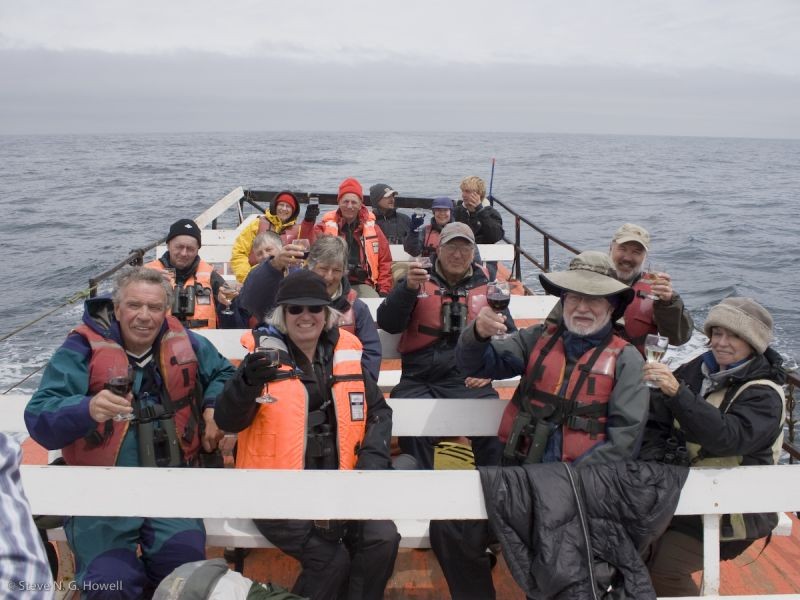


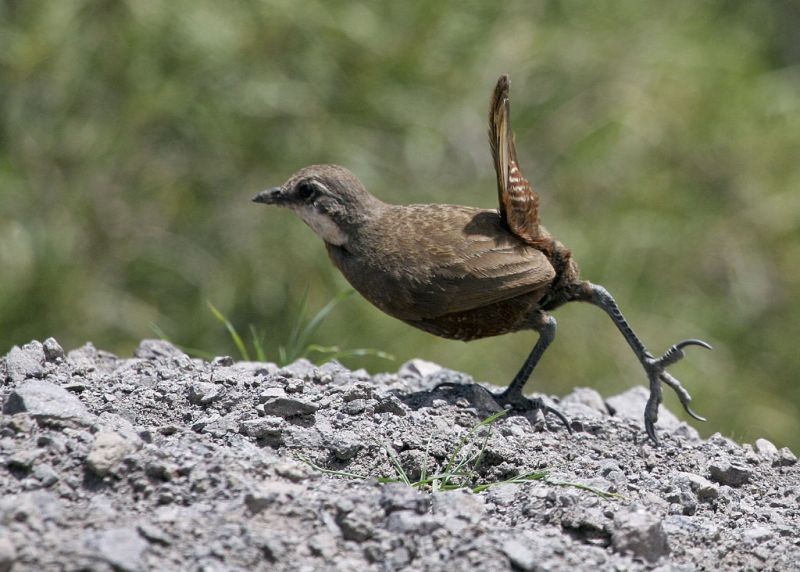

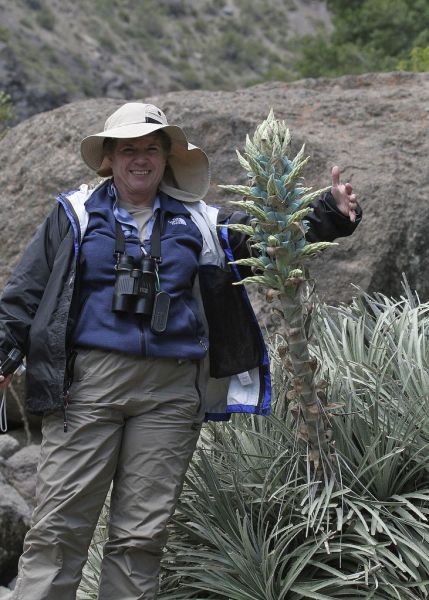
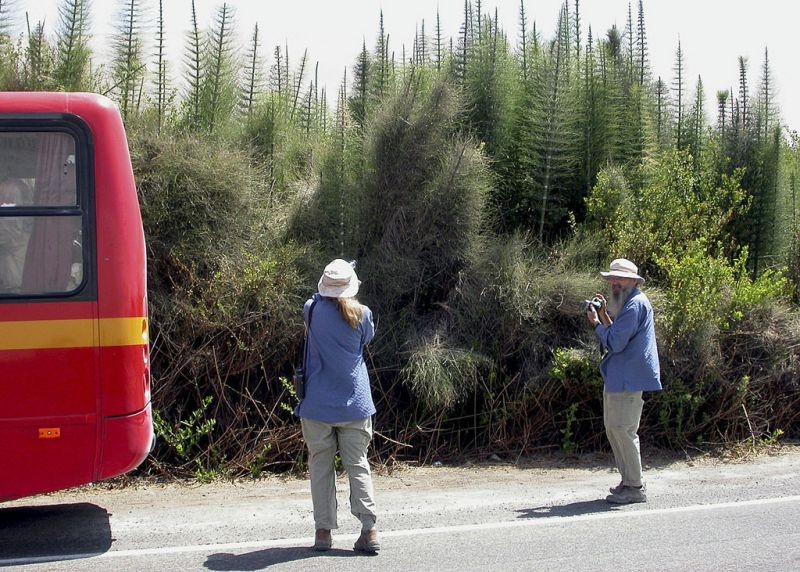

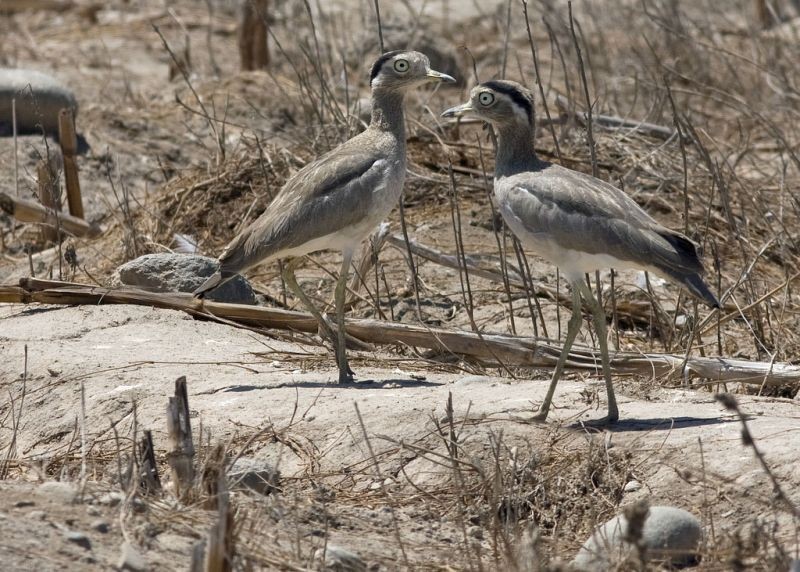

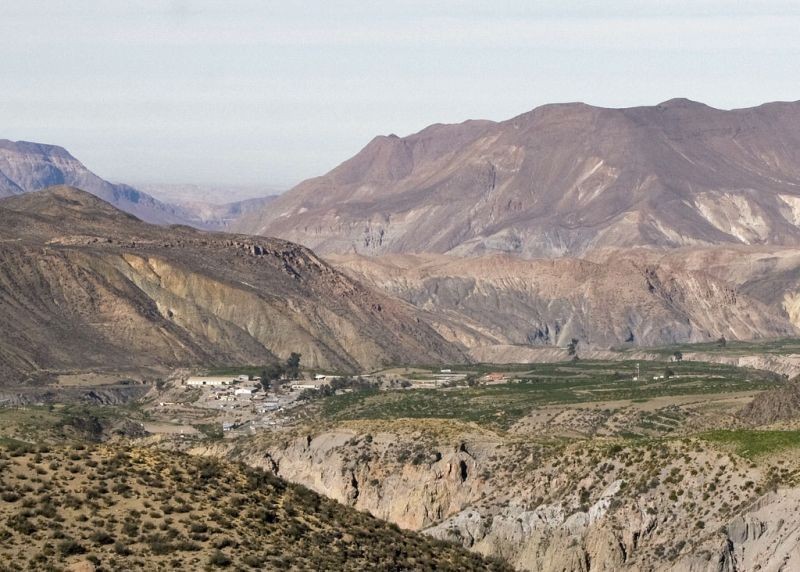






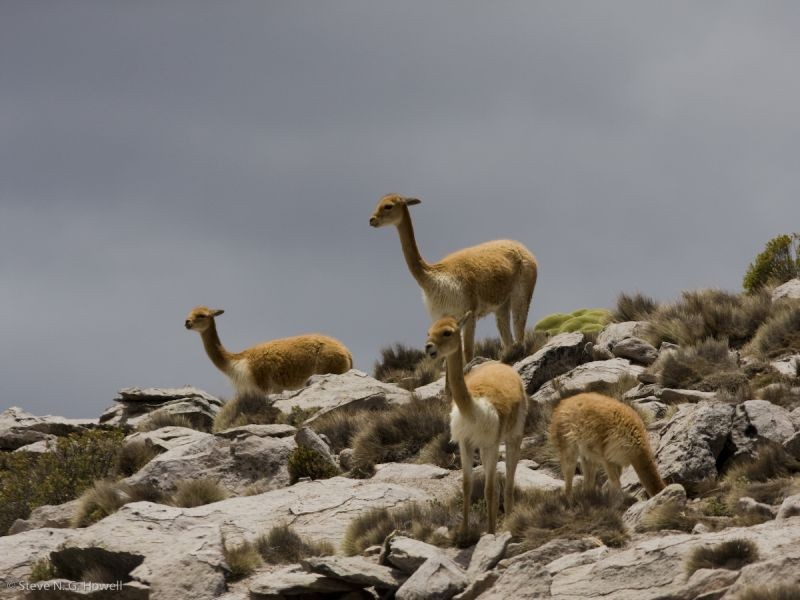











































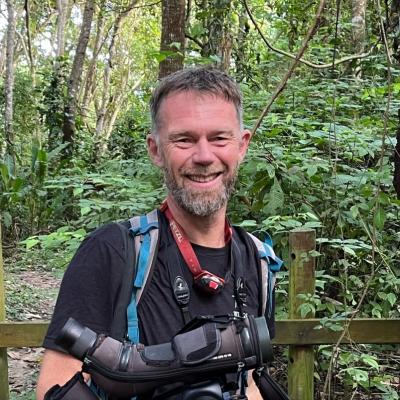
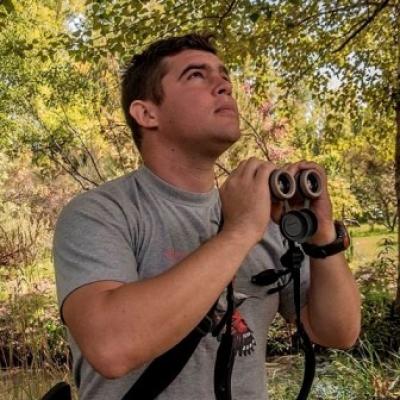

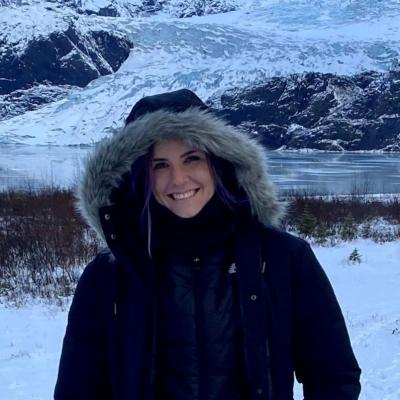
-400.jpg)
